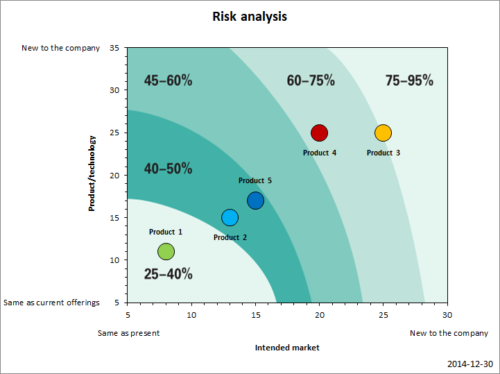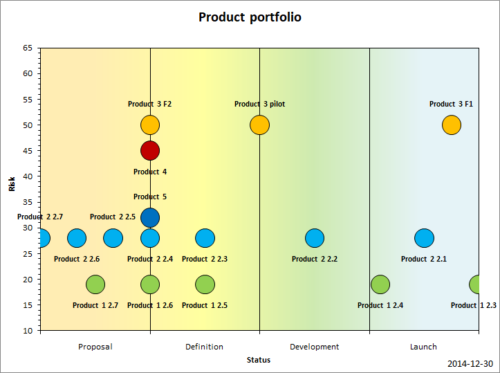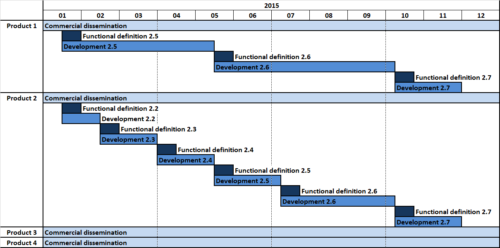Three (self-made) tools for Product Management
In a previous life I had the chance of starting from scratch the company’s Software Product Management department. I was able to define the processes and choose the tools to manage them. Although there are great pieces of software out there than can be extremely helpful, it is also certain that they come with a cost.
I would like to share here three of these self-made tools. I do not mean to be exhaustive and cover the whole product lifecycle, but to illustrate that you can do great things with as little resources as a spreadsheet.
Product portfolio risk analysis
In order to balance the different product development initiatives and help top management decide which ones to pursue, I adapted the Risk Matrix of George Day (originally published in the Harvard Business Review). In this matrix, market uncertainty is assessed in the horizontal axis, while product and technology risks are measured in the vertical axis. The initiatives to be evaluated are charted and fall into empirical risk regions that evaluate the chances of failure.
In this case the portfolio is quite balanced with a low-risk Product 1, two incremental developments (Products 2 & 5), a risky Product 4 and a highly innovative Product 3. In a single chart the characterization of each product in the portfolio can be assessed, as well as the risks that demand management attention.
Product portfolio lifecyle analysis
This tool allows seeing where in the lifecycle stage a given product is, if and when to expect a new release, and the product versioning policy. There are vertical swimlanes for each stage of the product lifecyle (in my case these were Proposal, Definition, Development, and Launch, but they could be adapted to any other set of stages, for instance to include Retirement). Each version of the product is then located in its corresponding swimlane, and even moved inside it to reflect stage maturity. From the previous chart a synthetic risk measure can be calculated and is used to locate the products in the vertical axis.
In the example, Product 2 is in active development, a new version of Product 1 has been recently launched and the following one is being defined, Product 3 is about to begin the development of a pilot as the phase 1 is nearing maturity, and Products 4 & 5 are awaiting definition – or a sponsor.
Product portfolio roadmap
The final tool is a simple Gantt diagram to show product releases over time. Alongside with a feature list by release, it is a powerful way to define product portfolio roadmaps.
Here we can see that Product 2 has a faster release cycle than Product 1. Also, development for Products 3 & 4 is frozen, probably because they are waiting for a sponsor.
Conclusion
I hope these three tools are useful for a starting Product Manager. Very simple resources and a little bit of creativity can go a long way to support your Product Management process, and you just have to apply them consistently to help you succeed.


